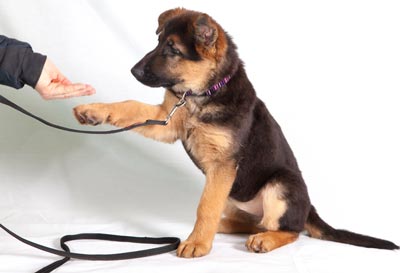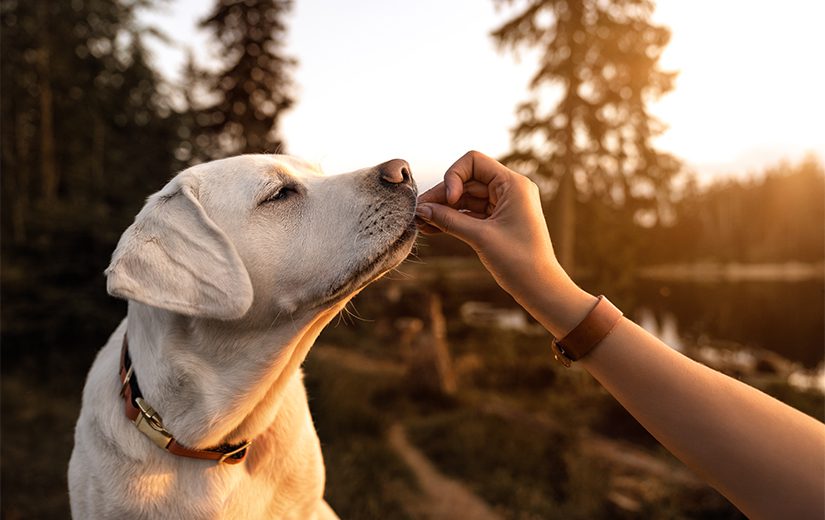Puppy Training: Start Your Pup Off Right with Professional Guidance
Top Dog Educating Methods Every Proprietor Must Know
Among the most prominent methods are positive support, clicker training, and chain training, each offering distinct benefits that add to a well-behaved canine. As we check out these fundamental strategies, it ends up being evident that understanding their subtleties can considerably impact the training experience and the pet's general behavior.
Favorable Reinforcement Strategies
Using positive support strategies is essential for effective pet dog training, as it fosters a trusting bond between the pet and the trainer. This method concentrates on rewarding desirable habits instead of penalizing unfavorable ones, producing a setting for learning. Incentives can consist of deals with, appreciation, or playtime, which encourage pets to repeat the actions that gain them these benefits.
Favorable reinforcement is rooted in the principles of operant conditioning, where actions is influenced by its effects. By constantly satisfying particular activities, trainers can shape a pet dog's habits with time. A pet dog that rests on command and receives a treat is extra likely to repeat that behavior in the future.
In addition, this technique enhances the canine's interest for training sessions. When pets associate training with positive experiences, they are more involved and responsive. Beyond prompt actions modification, favorable reinforcement urges a joint relationship between the pet and instructor, decreasing anxiousness and fear.
To maximize performance, it is crucial to provide benefits without delay, guaranteeing the dog links the behavior with the support. Essentially, favorable reinforcement techniques not just yield better-trained pets but likewise promote a harmonious partnership in between dog and proprietor.
Clicker Training Approach
The clicker training technique is an extremely reliable method that constructs upon the concepts of positive reinforcement by including an unique noise to mark desired behaviors. This technique makes use of a small handheld gadget that generates a clicking sound, permitting trainers to interact with their dogs in a clear and immediate way. When a pet dog carries out an actions that the owner desires to encourage, the clicker is turned on, adhered to by an incentive, normally in the kind of treats or appreciation.
The key to successful clicker training depends on uniformity and timing. It is critical to click at the precise minute the wanted actions occurs, making sure that the pet dog links the sound with the action and the succeeding reward. This technique not only improves communication but also cultivates a stronger bond between the owner and the pet dog, as it urges interaction and communication throughout training sessions.
Remote control training can be related to a range of commands and habits, from standard obedience to extra complex techniques. Its convenience and efficiency make it a favored method among expert instructors and family pet proprietors alike, paving the way for a trained and responsive canine friend.

Chain Training Essentials
Efficient chain training is essential for ensuring a secure and enjoyable walking experience for both canines and their owners. A level collar may work for some pet dogs, while others might benefit from a harness that lowers pulling.
Present your pet dog to the leash progressively, allowing them to discover it in a comfy environment. Method loose-leash walking once they are accustomed. This entails rewarding your pet dog for strolling close to you instead of pulling in advance. Use treats and appreciation to strengthen preferred habits, and make certain to stay assertive and calm.
If your dog begins to pull, quit walking promptly. Additionally, practice various walking atmospheres to assist your pet dog adjust to diversions.
Routine technique will solidify your pet's understanding of chain etiquette. Remember that leash training is a recurring process; perseverance and consistency will certainly yield the finest outcomes, promoting a positive experience for both you and your canine buddy.
Socializing Approaches
Socializing is a crucial aspect of pet training that must preferably begin during puppyhood yet can be beneficial at any kind of age. Efficient socialization aids pets establish confidence and decreases the likelihood of behavior problems. To implement effective socializing methods, subject your pet to a variety of atmospheres, people, and other pets.

Start with controlled setups, such as puppy courses or arranged playgroups, where young canines can connect securely. Slowly introduce your dog to new experiences, including various sounds, surfaces, and activities. Ensure these experiences are positive and rewarding to develop a complacency.
For grown-up pet dogs or those lacking direct exposure, begin with low-stress circumstances. Short, positive communications with friendly people and calm canines can develop positive organizations - Dog training. Utilize treats and appreciation to strengthen desirable behaviors during these experiences
Checking your canine's body language is vital; indications of worry or aggressiveness must be attended to immediately, either by eliminating the pet from the situation or redirecting its emphasis. Consistently you can look here exposing your pet dog to varied stimuli will certainly foster versatility, making it an all-round companion with the ability of flourishing in different setups.
Consistency and Patience
Recognizing the relevance of uniformity and patience in pet training is important for attaining long lasting outcomes. Training a dog is a progressive procedure that calls for an organized approach and unwavering commitment from the owner. Each command or habits should be reinforced constantly to aid the dog comprehend what is anticipated of them. Inconsistent training can cause complication, making it challenging for the pet dog to understand commands or actions, ultimately preventing progress.
Pets, like humans, learn at their own speed. This fosters a trusting relationship between the pet and proprietor, motivating a much more ready and passionate learner.
To cultivate uniformity and perseverance, develop a normal training regular, use the same commands, and make certain that all family participants apply the very same training principles - Dog training. By doing so, you produce a steady environment conducive to discovering, enabling your dog to prosper and create into a mannerly friend

Verdict
To conclude, effective canine training methods, such as favorable support, clicker training, and proper leash training, are crucial for cultivating a healthy and balanced owner-dog relationship. Furthermore, executing socializing strategies and preserving consistency and patience throughout the training process adds substantially to a dog's overall wellness. By incorporating read review these techniques, dog proprietors can help with the advancement of well-adjusted, obedient pets, eventually enhancing the lifestyle for both the pet dog and the proprietor.
Amongst the most prominent Discover More Here methods are positive support, clicker training, and chain training, each offering special advantages that contribute to a mannerly pet dog. As we explore these basic techniques, it ends up being evident that grasping their nuances can significantly affect the training experience and the pet dog's general behavior.Using positive support methods is crucial for efficient pet training, as it promotes a relying on bond between the trainer and the canine.In conclusion, reliable pet training methods, such as positive support, clicker training, and appropriate leash training, are important for cultivating a healthy owner-dog partnership. By incorporating these methods, pet proprietors can promote the development of well-adjusted, loyal family pets, eventually boosting the high quality of life for both the proprietor and the canine.